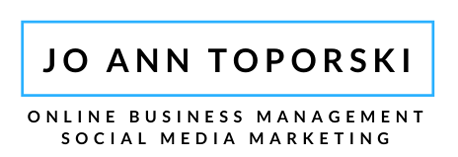Social media marketing is a staple for businesses and has become more critical than ever for brands to get their acts together. Working as a social media strategist for the past six years has given me an opportunity to work with many clients that take social media seriously and have put processes in place to facilitate success. It has also given me ample occasion to deal with businesses that fail to acknowledge that social media marketing requires commitment and the right mindset.
Tips for Businesses That Are Serious About Succeeding With Social Media
Realize there’s no substitute for a sound strategy.
Brands that have built a large and engaged following didn’t do so by accident. They strategize and have a plan for their social media channels. They have taken the time to understand what’s important, interesting, and entertaining to their audience.
Here are some examples of what an effective social media plan for your business should address:
- Needs and expectations of your audience on each platform
- Types of content you will post on those platforms
- Content themes to guide the kinds of posts you will create
- Frequency of updates
- Policies for responding to mentions, comments, and messages—positive and negative
A content calendar is an important tool that can help you organize the social media content you create to align with your strategy.
Respect each platform’s nuances.
Facebook isn’t Twitter. Twitter isn’t LinkedIn. LinkedIn isn’t Instagram…you get the idea! Each social media channel has its own unique qualities, and the audience on one will have different expectations than the audience on another. For example:
- Hashtag usage – Instagram users expect to see multiple hashtags on posts, but on Twitter using just one or two is ideal. Hardly anyone uses them on Facebook. LinkedIn is encouraging hashtag use, but the jury is still out on whether it will gain notable popularity as a best practice.
- Frequency of updates – To stay on the radar on Twitter, it requires a much higher posting frequency than on other platforms. So while tweeting every two hours won’t overstay your welcome on Twitter, posting that often on Facebook, Instagram, or LinkedIn might result in people muting or unfollowing you.
- Formality – LinkedIn, with its 100 percent professional focus, demands a bit more professionalism than other platforms. However, don’t confuse “professionalism” with “stuffiness.” You can be professional without being boring .
Be approachable and real. It’s called “social” media for a reason.
Businesses that come off as out of touch with or uninterested in their followers put themselves at a competitive disadvantage. Make your presence more than just a talking logo that promotes your services in every post. Mix it up and give your updates the human touch.
Some ideas for how to do that include:
- Strike conversations with your followers. Ask questions or create polls to get them talking.
- Share glimpses of what happens behind the scenes of your business via videos.
- Introduce your team members through bios or video interviews.
- Share real-life stories about how your services and products have helped your customers.
By making followers feel at home, you’ll gain their trust and facilitate interaction. Ultimately, that can result in referrals, leads, and new customers.
Be visual.
Attention spans are short so add photos and videos to your social content. It will boost engagement and is perfect for businesses with products to show off. If you have a service-based business, consider a photo with words or a photo that complements your text. And don’t overlook visually-oriented platforms like Instagram and Pinterest.
Stay up to date on social media changes.
Keep in touch with your social media manager and subscribe to blogs that focus on content marketing and social media trends and best practices. Most important, don’t be a stranger to your social media accounts. You’ll find that you’ll see or receive notifications of changes (such as layout modifications) made to platforms if you log into your accounts frequently.
Make sure your social media manager has your support.
Social media followers expect answers to their questions and concerns quickly. This means you must make answering questions from your social media manager a high priority. The worst thing that a business on Twitter or Facebook can do is to post a status, but then never respond to followers’ comments.
Accept that you will probably need to “pay to play” if you want to expand your reach significantly. With the intent to facilitate a more enjoyable social media experience for consumers, platforms have tweaked their algorithms to organically show less content from brands in followers’ news feeds. To gain greater exposure online, you may need a little help from the almighty dollar. Fortunately, options like Facebook Ads and advertising on Instagram offer a comparatively cost-effective way to boost your brand and accomplish reaching a more extensive and l targeted audience.
Don’t bite off more than you can chew.
One of the biggest mistakes businesses make is trying to be on more social media channels than they are capable of handling. Also, resist the urge to immediately jump on the bandwagon when a new platform enters the field. Being an early adopter doesn’t always work to your advantage. Not every new channel takes off and sticks around for the long term.
Don’t try to do it yourself.
As a small business owner, your time is limited, so delegate social media work to an expert. Then add the cost of your social media strategy to your budget.”
The Ultimate Social Media “Must”.
The absolutely essential ingredient for success with social media is the willingness to embrace it as part of your business operations. Just like other aspects of your business—sales, customer service, production, technical support, etc.—social media requires constant attention and evaluation. And, like other aspects of your business, your social media goals should be aligned with your overall organizational goals and objectives.




Recent Comments